Solar power on Tribal Lands brings electrification for the first time — and possibly a new industry

SHONTO, Ariz. and DURANGO, Colo. — Although electricity has been widely available in the United States for more than half a century, on Navajo lands about 30% of families continue to live off the grid without power in their homes.
For the past two years, Fort Lewis College students have worked to reduce that number by installing solar panels and battery storage systems for families living off the grid.
Led by engineering professor Laurie Williams and Camille Keith, a native of Shonto, Arizona and engineering graduate of Fort Lewis College, 25 students recently spent their spring break powering up the community.
“The students work for months preparing for these solar system installations,” said Williams. “Every component of the system is carefully designed and prepared, so we can install them efficiently and successfully when we arrive here.”
For Keith, the project hits close to home. Last year, one of the two pilot systems was installed in the hogan of her aunt, the place where she was raised by her grandparents without electricity or running water.
“When I was growing up, we hauled firewood and coal to fuel our stoves for cooking and heat,” Keith said.
Growing up, Keith and her family also hauled their water and charged electronic devices, such as their cell phones, in their cars.
“We had to be independent, and it took so much time and effort,” she said. “My mother had to live away from our home to support us. It was hard.”
The family homes in remote areas remained without electricity because running the electrical grid out to isolated areas with few homes was too expensive, Keith said. Electrifying them now requires wiring and installing small-scale solar energy and battery systems, she said.
“Last year, our first post Covid-19 work on the reservation, we built two as a pilot effort,” Keith said. “This year, we are here building four.”
The team’s efforts are part of a decades-long Village Aid Project , formerly known as Engineers Without Borders, that has provided sustainable water, sanitation, and energy systems to underserved remote communities, including the Navajo Nation. Funding the Shonto energy system relies on a mixture of donations, grants, and in-kind efforts from the Fort Lewis College students, staff and faculty.
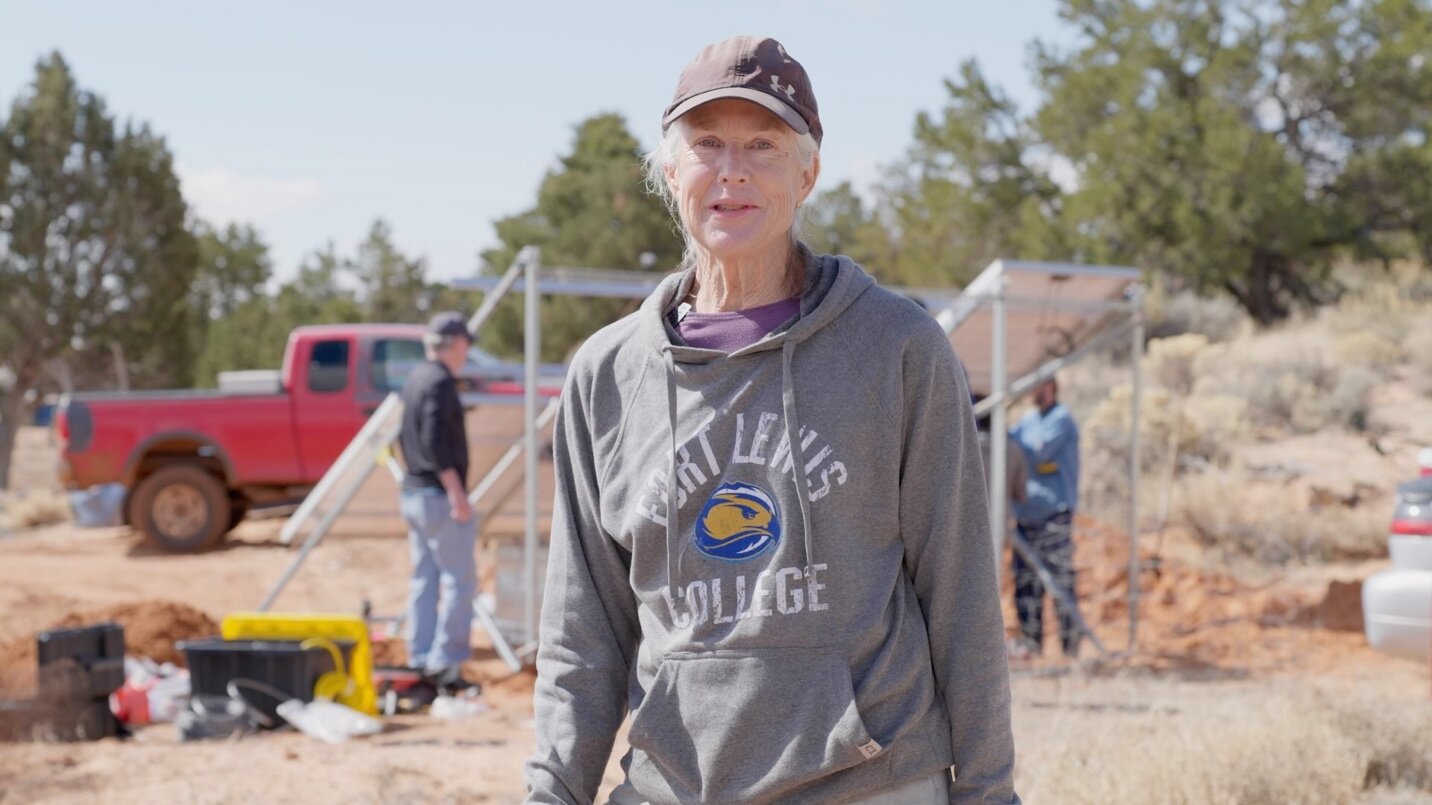
Professor Laurie Williams on site in Shonto, Arizona.
Photo: Robert Marcos
“Local electricians wire up the homes. We install the solar panels, the inverter as well as the battery storage system, which we then hook up to the homes,” Williams said.
This year, Bryan Kee’s family was one of the recipient households.
“We are very excited ... We have been envisioning having electricity in our homes for a long time,” Kee said. “I’m 55-years old. I have lived here all of my life with my parents, without electricity to refrigerate our food and provide us heat and light. We have cooked over a wood stove and used firewood to heat our hogan.”
Related stories
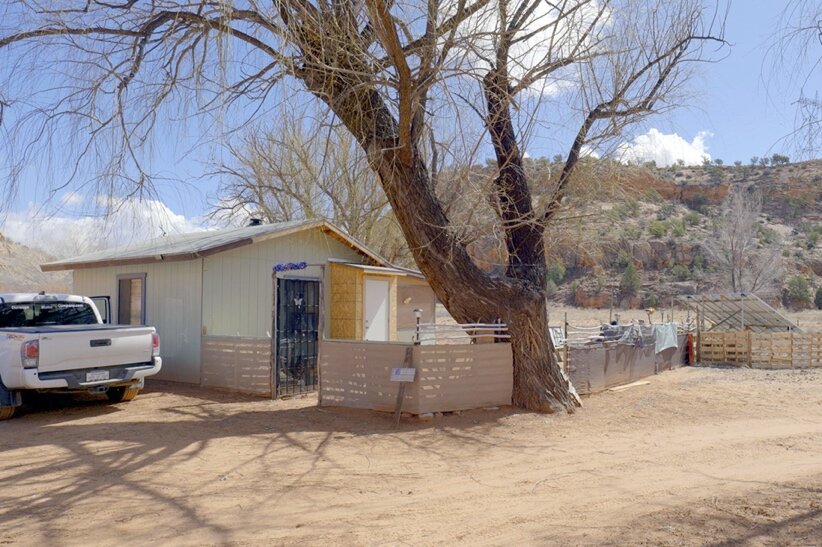
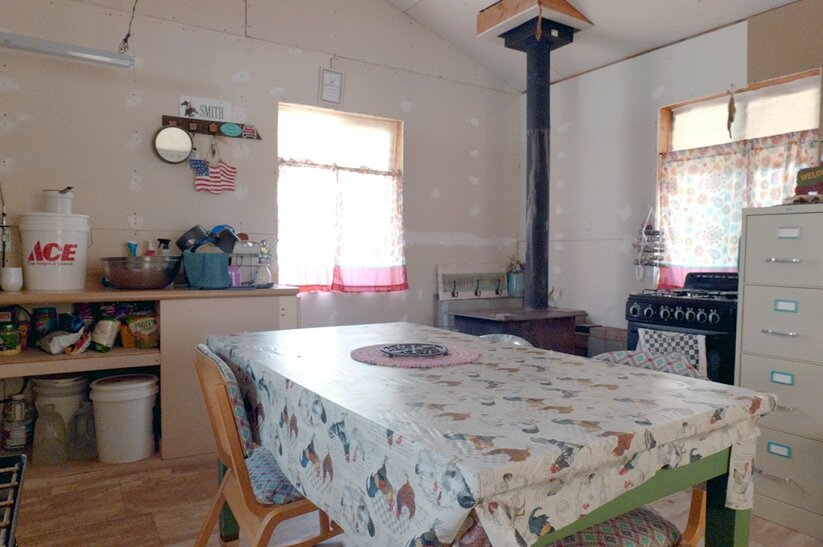
Camille Keith’s family home, the first home to be wired for electricity in the spring of 2023.
Photos: Robert Marcos
Refrigeration is essential to storing perishable foods such as vegetables and protein, Keith said. Without that, she said, families are forced to eat more processed foods than they would otherwise.
“Obesity and diabetes are serious health problems among my people. We face big health disparities,” Keith said. “Our options are so limited. Fresh food is essential to good health and nutrition, and our project makes that possible.”
And, this year, an anonymous donor supporting the Village Aid Project provided each of the four recipient homes with a refrigerator to ensure that access to electricity would be accompanied by access to refrigeration.
The weather in the high desert as the students installed the systems treated them well, unlike last year when they faced weather from all seasons in a week.
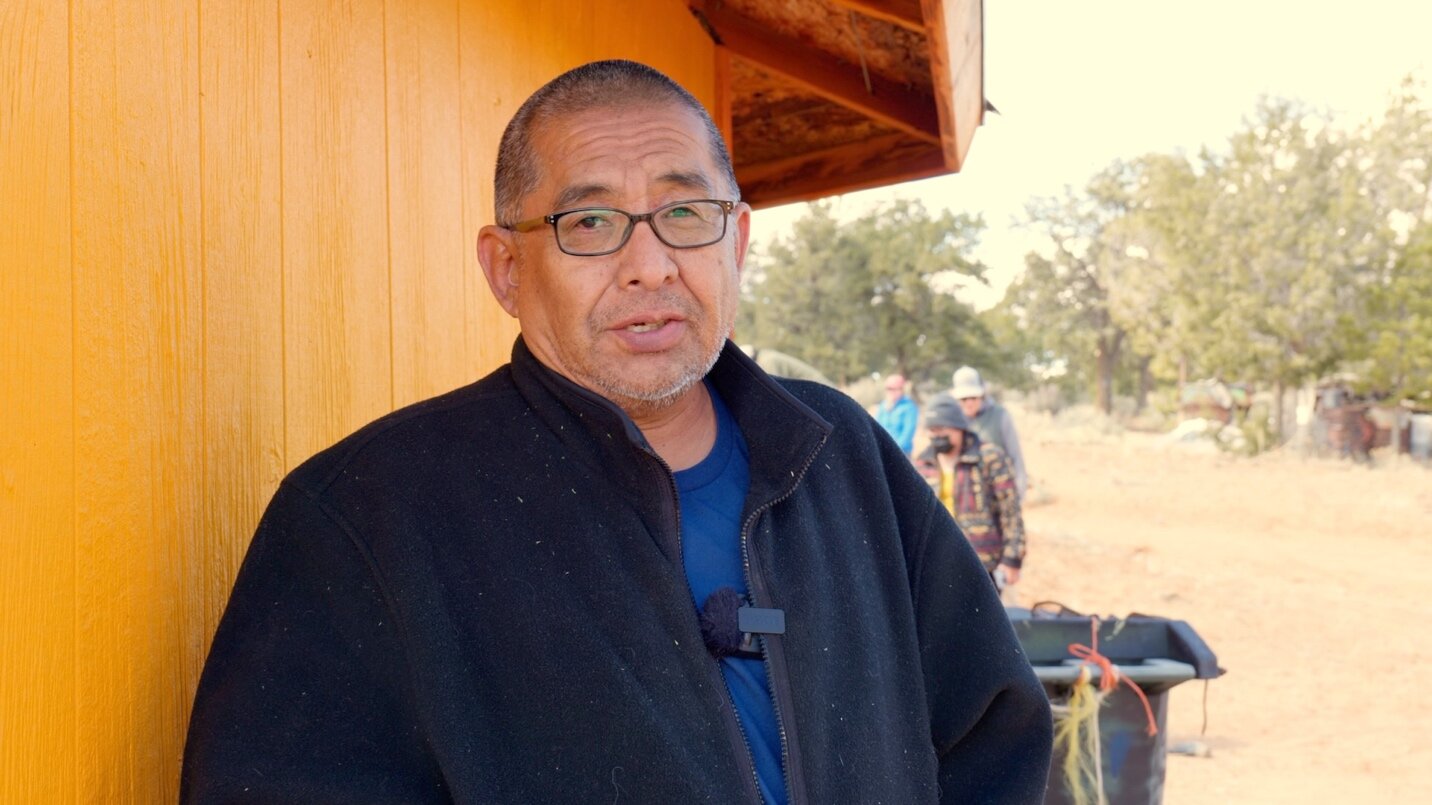
Bryan Kee, 55, stands in front of the family home he’s lived in his whole life without electricity.
Photo: Robert Marcos
Volunteer Katie Jo Roseberry returned to Fort Lewis College as a “non-traditional” student to pursue a degree in engineering after getting her first degree in accounting in 2006.
“Being a fourth-generation student in Southwest Colorado, I know how impoverished sections of the Navajo Nation are, and there have been a lot of promises made and broken,” Roseberry said. “I feel that it’s very important, especially being a local, to give back and to help change that situation.”
Roseberry sees the solar electrification project as a way to take action against climate change as weather extremes become more frequent and affect everything from crops to construction.
“We are going to have to make changes,” she said. “Sitting at home is not going to get us where I want us to be. So, I have to get out and help with projects like this one to make the changes I want to see.”
Professor Williams said that their efforts providing solar energy to Navajo families had added value in establishing who renewable energy initiatives can serve.
“The question to me is not what does the clean energy transition look like. It is about who it looks like. To me, it looks like the students at Fort Lewis College I get to work with every day, who are passionate about a better future.”
Keith, the project co-leader, views these efforts as her calling for her people and for the world around her, an answer to the prayers of her elders who have told her that she represents what they had always hoped for, someone who would go out and learn and then come back to help raise up their communities.
“I plan to continue working to provide solar electricity to my home community of Shonto and to the Navajo nation,” Keith said. “I also look forward to working on projects around the world that help other indigenous peoples improve their lives through the delivery of access to clean water and reliable solar power.”
Large-scale solar power on tribal lands
In addition to installing solar energy systems for individual families and local communities, said Manuel Heart, chairman of the Ute Mountain Ute Tribe, large solar farms are likely to be economic and environmental winners for tribes and their members in the Four Corners region of the Southwest as solar farms generate hundreds of jobs.
“Our reservations are situated in high desert landscapes, and we have lots of land that has limited alternative land uses. We also have abundant sunshine, and there is a huge electricity grid nearby that is underutilized,” Heart said.
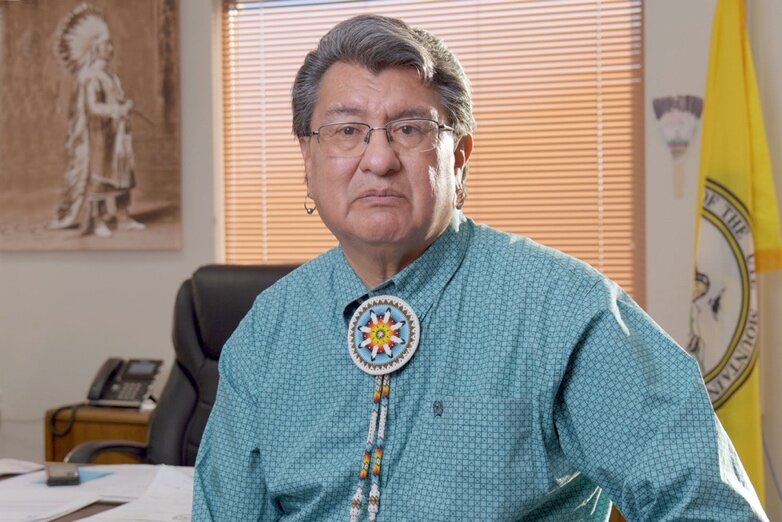
Chairman Manuel Heart of the Ute Moutain Ute Tribe in Towaoc, Colorado.
Photo: Robert Marcos
“Solar energy will help to restore our people’s spiritual connection to the sun and our lands as we respond to the challenges of climate change and declining oil and gas revenues,” he said.
In 2024, the Ute Mountain Ute Tribe based in Towaoc, Colorado began the installation of two solar farms on its lands, initiating a significant move away from the oil and gas royalties they have relied upon for more than 100 years, said Scott Clow, the environmental programs director, for the Ute Mountain Ute tribe.
One of the solar farms — the $1.5 billion, 4,000 acre Sun Bear farm — broke ground recently and will generate 765MW, which Clow said is enough to meet the electricity needs of Denver.
The Ute Mountain Ute are one of five tribes in the Four Corners Region, along with the Hopi, Navajo, Southern Ute, and Jicarilla Apache, who are navigating the shift away from oil, gas, and uranium toward clean energy options.
This shift is perhaps most conflicted and painful on the Navajo reservation, where many communities were until recently highly dependent on coal and uranium mining and the operation of large coal-burning power plants for employment and revenue.
The 2019 closure of three major coal-powered generation stations, including the demolition of the Navajo Generating Station, was a big economic hit for the community.
Across the Navajo Nation, families and communities are confronting economic dislocation following the closures of mines and electricity plants that provided hundreds of jobs to Navajo workers.
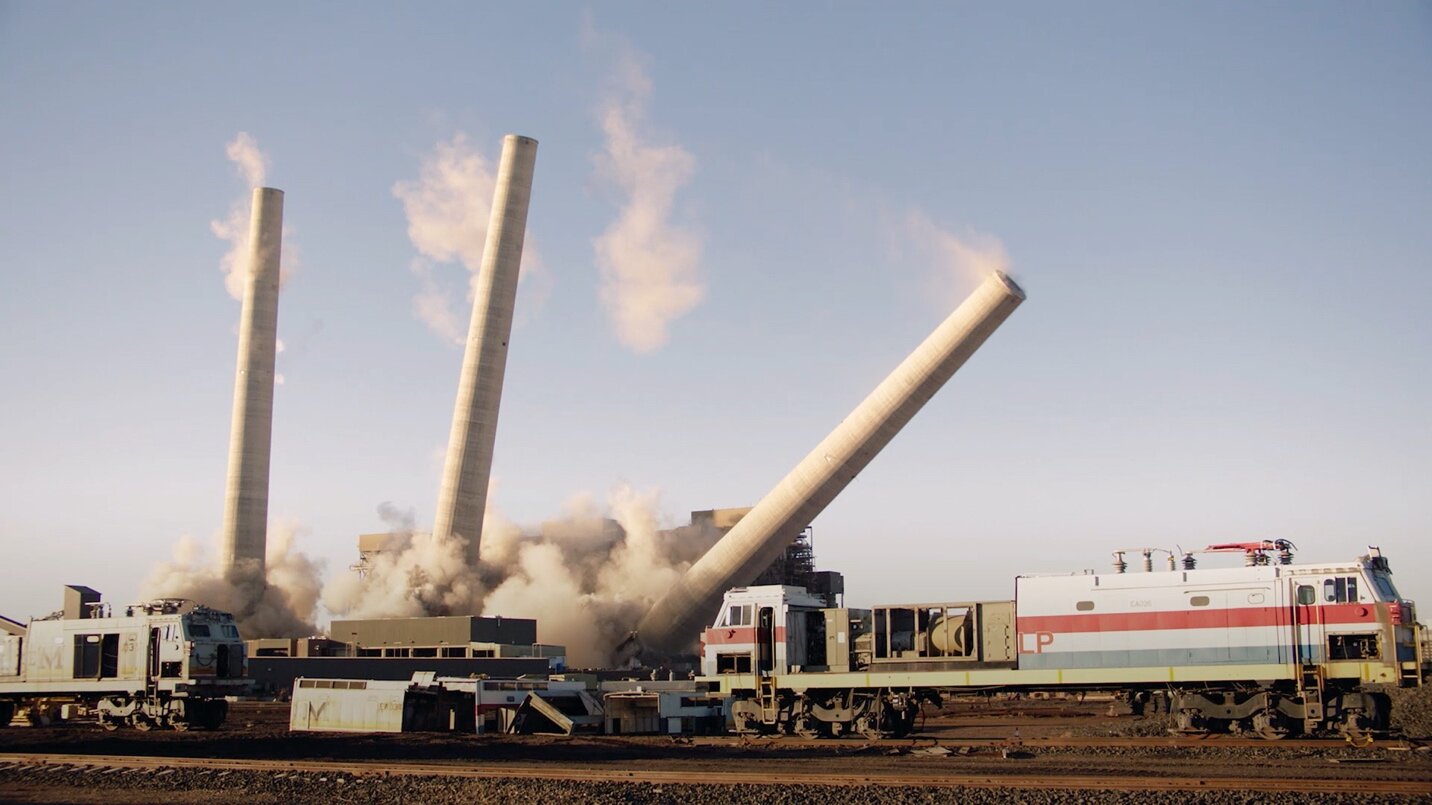
The demolition of the Navajo Generating Station in 2019.
The struggle following these closures, said Diné activist, Nicole Horseherder, is for “a just transition: one in which there is mutual benefit between the Navajo Nation and its partners.”
Building large-scale solar farms are an option on the Navajo Reservation, too, but five years have passed since the demolition of the Navajo Generating Station without one yet being installed.
However, two smaller-scale solar farm projects have been completed in Kayenta, Arizona and Red Mesa Tapaha, Utah. These projects are less than one-tenth of the scale of the Ute Mountain Ute Sun Bear project and focus on electricity provision to households in Navajo towns and to surrounding non-reservation rural communities in Southern Utah.
Other larger installations are in the planning stages but have yet to break ground.